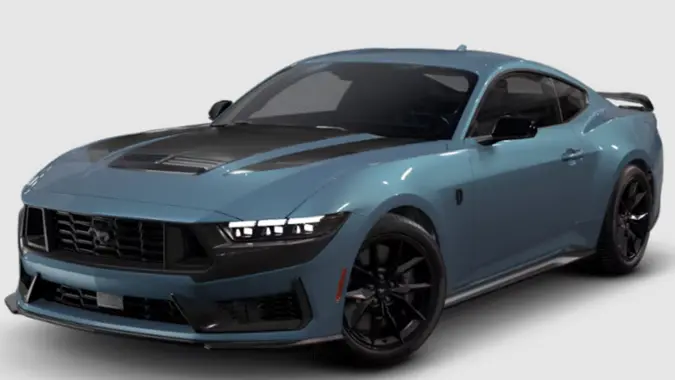6 Asian Cars To Stay Away From Buying

Commitment to Our Readers
GOBankingRates' editorial team is committed to bringing you unbiased reviews and information. We use data-driven methodologies to evaluate financial products and services - our reviews and ratings are not influenced by advertisers. You can read more about our editorial guidelines and our products and services review methodology.

20 Years
Helping You Live Richer

Reviewed
by Experts

Trusted by
Millions of Readers
Shopping for your next car might come with different considerations: year, mileage and price range. But an important factor to consider before putting money down is what company made your car and where it was produced.
American-made vehicles can handle differently than foreign ones — some are better, some are worse across the board. A country that’s known for its auto manufacturing is Asia, but not all Asian makes and models are top-tier.
“When considering Asian car manufacturers like Toyota, Nissan, and Kia, most models are known for their reliability and value,” said Geoff Cudd, consumer advocate and owner of Find The Best Car Price. “However, there are exceptions.”
What are those exceptions the next time you’re looking to buy a car and considering an Asian-made one? GOBankingRates has compiled a list of six Asian cars to stay away from buying.
Nissan Versa
According to Cudd, “early versions of the Nissan Versa had issues with their transmissions that led to a poor reputation for reliability.”
These years of the Nissan Versa have been noted for transmission issues, particularly with the CVT (Continuously Variable Transmission), leading to expensive repairs,” agreed Joe Giranda, the director of sales & marketing for CFR Classic.
“Additionally, there have been concerns regarding the overall interior quality and driving experience, which have been described as below par compared to competitors,” Giranda said.
Mitsubishi Mirage
“While the Mirage scores points for affordability and fuel efficiency, it falls short in terms of performance, handling and interior quality,” Giranda explained.
“The engine is noted for being underpowered, and the car’s driving dynamics have been criticized for not providing a confident or comfortable ride, particularly at highway speeds,” Giranda said of the Mitsubishi model.
Kia Rio
Along with the Forte, which has shot up in popularity over the last five or so years, Ben Michael, director of auto at Michael & Associates, recommends steering clear of Kia’s Rio as well.
Michael highlighted that Kia’s models “consistently make the list of top most dangerous cars to drive according to death reports. Though they are pretty standard sedans, they have proven less safe than other sedans and it’s not worth risking your safety.”
“The Kia Rio, while affordable, has been criticized for its lack of advanced safety features and a less comfortable ride compared to its competitors,” Cudd said.
Toyota bZ4X
Toyota’s first foray into the dedicated electric vehicle market has unfortunately not lived up to expectations in the opinion of Alex Johnson, CEO of Man and Van Star.
“The bZ4X has been critiqued for falling behind the competition in several key areas. The vehicle’s range and charging capabilities, in particular, have drawn criticism,” commented Johnson.
“With a maximum range of up to 252 miles on a single charge for its front-wheel-drive version and slower charging compared to its rivals, it does not match up to the competition,” Johnson continued about the 2023 model. “Additionally, the redesign of the gear selector into a dial has been described as confusing, with poor ergonomics, further detracting from the driving experience.”
Suzuki Grand Vitara
“Before Suzuki ceased U.S. car sales, the Grand Vitara was criticized for its lackluster fuel economy, dated interior design, and overall performance that didn’t keep up with competitors,” Giranda said.
“Suzuki’s departure from the U.S. market has made parts and service increasingly difficult to come by, potentially complicating maintenance and repairs,” Giranda said.
Jeep Grand Cherokee 4XE
In 2023, Jeep attempted to make a plug-in hybrid version of the beloved Grand Cherokee, debuting their 4XE, a model that, in Johnson’s words, “has been met with disappointment.”
“The model’s ambitious pricing does not align with the hybrid system’s performance, which has been noted for its rough transitions and limited electric-only driving range,” Johnson explained.
“This is particularly notable in the Trailhawk trim, where the 4XE powertrain is mandatory, yet it fails to deliver the smooth, efficient hybrid experience consumers might expect from a vehicle at its price point,” Johnson said.
Hyundai Veloster
“The first-generation Veloster was ambitious in its design and concept, offering a unique three-door configuration,” Giranda described of the Hyundai model. “However, it has faced criticism for its rough ride, uninspiring interior materials, and reliability issues.”
“The turbocharged models, in particular, have faced engine performance problems, deterring potential buyers seeking a reliable and fun compact car,” Giranda said.
This list is not to say that all cars produced by Asian manufacturers are faulty and to be steered clear of buying — far from it. As always, when it comes to buying a car, it benefits you to do your research before buying.
“Consumers must look beyond the badge and evaluate individual models based on their specific needs and the car’s track record,” Cudd advised. “While brand reputation can guide you, individual model performance, safety ratings, and consumer feedback are paramount in making an informed decision.”
 Written by
Written by  Edited by
Edited by 

























